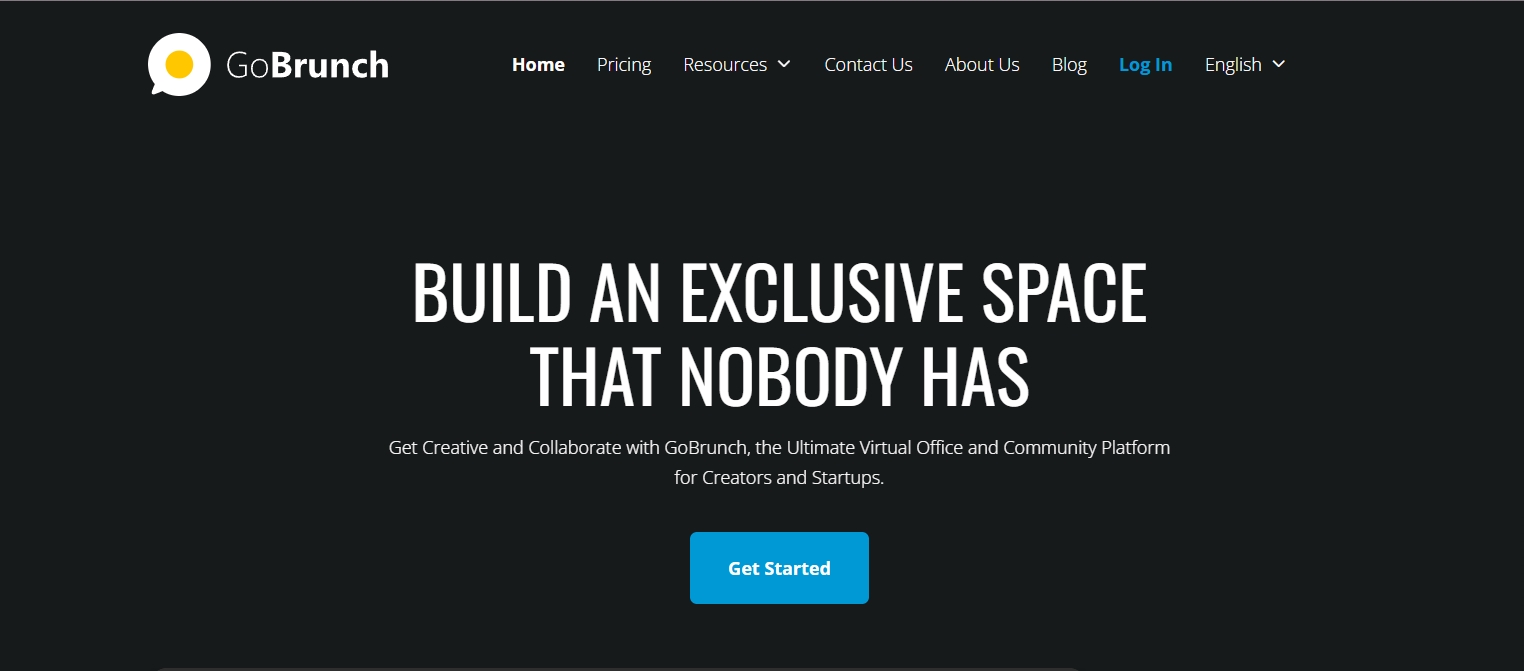Crafting Virtual Communities: Lessons from Real-World Intentional Communities

Customer retention is the key
Lorem ipsum dolor sit amet, consectetur adipiscing elit lobortis arcu enim urna adipiscing praesent velit viverra sit semper lorem eu cursus vel hendrerit elementum morbi curabitur etiam nibh justo, lorem aliquet donec sed sit mi dignissim at ante massa mattis.
- Neque sodales ut etiam sit amet nisl purus non tellus orci ac auctor
- Adipiscing elit ut aliquam purus sit amet viverra suspendisse potent
- Mauris commodo quis imperdiet massa tincidunt nunc pulvinar
- Excepteur sint occaecat cupidatat non proident sunt in culpa qui officia
Focus on increasing customer retention first
Vitae congue eu consequat ac felis placerat vestibulum lectus mauris ultrices cursus sit amet dictum sit amet justo donec enim diam porttitor lacus luctus accumsan tortor posuere praesent tristique magna sit amet purus gravida quis blandit turpis.

Don’t overspend on growth marketing without good retention rates
At risus viverra adipiscing at in tellus integer feugiat nisl pretium fusce id velit ut tortor sagittis orci a scelerisque purus semper eget at lectus urna duis convallis porta nibh venenatis cras sed felis eget neque laoreet suspendisse interdum consectetur libero id faucibus nisl donec pretium vulputate sapien nec sagittis aliquam nunc lobortis mattis aliquam faucibus purus in.
- Neque sodales ut etiam sit amet nisl purus non tellus orci ac auctor
- Adipiscing elit ut aliquam purus sit amet viverra suspendisse potenti
- Mauris commodo quis imperdiet massa tincidunt nunc pulvinar
- Adipiscing elit ut aliquam purus sit amet viverra suspendisse potenti
What’s the ideal customer retention rate?
Nisi quis eleifend quam adipiscing vitae aliquet bibendum enim facilisis gravida neque euismod in pellentesque massa placerat volutpat lacus laoreet non curabitur gravida odio aenean sed adipiscing diam donec adipiscing tristique risus amet est placerat in egestas erat.
“Lorem ipsum dolor sit amet, consectetur adipiscing elit, sed do eiusmod tempor incididunt ut labore et dolore magna aliqua enim ad minim veniam.”
Next steps to increase your customer retention
Eget lorem dolor sed viverra ipsum nunc aliquet bibendum felis donec et odio pellentesque diam volutpat commodo sed egestas aliquam sem fringilla ut morbi tincidunt augue interdum velit euismod eu tincidunt tortor aliquam nulla facilisi aenean sed adipiscing diam donec adipiscing ut lectus arcu bibendum at varius vel pharetra nibh venenatis cras sed felis eget.
Today's article features insights from Carolyn Anne Hocquard, an expert in sustainable development, green architecture, and tiny house design, offering practical tips for creating eco-friendly virtual spaces.
A Personal Connection to Community Building
Ever wondered how tiny houses, intentional communities, and virtual community design connect? I found myself deep in these questions recently. Picture this: it’s a chilly morning in Nova Scotia, and I’m sipping my hot coffee, browsing through my Facebook group for tiny house enthusiasts. With over 15,000 members, it’s a buzzing hub of ideas and inspiration. This group isn’t just about houses; it’s about creating communities, sharing resources, and living sustainably.
You see, I’m not just an architecture enthusiast. I’m also a graphic and web designer, passionate about marketing and nature. My journey into community building started with tiny houses but quickly expanded into exploring how these principles apply to virtual spaces. So, let’s dive into the fascinating world of intentional communities and how they can inform the design of virtual communities.
The Essence of Intentional Communities
Defining Intentional Communities
Intentional communities come in various forms, like eco-villages, co-housing, and more. These are groups of people who choose to live together, sharing a common purpose or set of values. Think of it as living with a bunch of friends who all agree on certain principles and ways of living.
Take Auroville in India, for example. Their purpose is to realize human unity in diversity, welcoming people from all over the world. Another example is Our Eco Village in British Columbia, which focuses on education, inspiration, and transformation through a thriving learning community and a permaculture demonstration site.
Purpose as a Guiding Star
Having a clear purpose is crucial. It’s like having a roadmap that helps filter out what’s necessary for the community and what’s not. This clarity ensures everyone is on the same page and helps in the design and structure of the community, whether it's physical or virtual.
For instance, in my tiny house community, our purpose revolves around sustainable living and supporting each other in off-grid lifestyles. This shared goal helps us decide on the kind of content and resources we need to provide to our members.
Bridging the Gap to Virtual Communities

Virtual Communities and Social Aspects
Now, translating these principles to virtual communities isn’t as far-fetched as it might seem. Virtual spaces can foster the same sense of belonging and shared purpose. Just like in physical communities, having a clear purpose in a virtual community helps in creating a focused and engaging environment.
One thing I’ve learned from designing virtual communities, particularly using platforms like
GoBrunch, is that the layout and functionality of these spaces matter a lot. GoBrunch, unlike Zoom, allows for a more dynamic and location-based interaction, which is crucial for memory and learning.
Designing Virtual Spaces with Intent
When designing a virtual community, start with a broad overview. Architects use a tool called a bubble diagram to map out spaces and their connections. This helps in visualizing how different areas of the community will interact and support various activities. In a virtual setting, think about what each space will be used for and how members will navigate through these spaces.
For instance, in GoBrunch, you can create different rooms for different purposes – a room for large gatherings, smaller rooms for intimate discussions, and even breakout spaces for informal chats. This is akinto creating different zones in a physical community, each serving a specific function and contributing to the overall experience.
Practical Applications and Examples
The Catalyst Community
Let’s talk about a real-life example – the Catalyst community run by Marissa. She’s implemented many of these principles effectively. In her virtual community, there’s a clear separation between public and member spaces. Newcomers get tours and access to public areas, making them feel welcomed and oriented. This onboarding process is similar to having a visitor center in a physical community.
Creating Pathways and Narratives
Another key aspect is creating a narrative or path through the virtual space. Just like in physical spaces where our memory is often linked to locations, virtual communities can leverage this by designing spaces that people move through in a meaningful way. In GoBrunch, you can create a flow from public to private spaces, mimicking the journey one might take in a physical community.
For example, start with a welcoming public area, then moveto semi-private rooms for more focused group activities, and finally, to private spaces for one-on-one interactions or small group discussions. This gradient from public to private helps in managing the community’s dynamics and ensures everyone has a place where they feel comfortable.
The Importance of Casual Interaction
Third Spaces in Virtual Communities
One thing that’s often missing in virtual work environments is the casual, unplanned interaction – those water cooler moments. These interactions are crucial for building relationships and fostering a sense of community. In virtual communities, creating a third space, a place with no specific purpose where people can just hang out and chat, is essential.
Implementing Third Spaces
Public libraries serve as a great analogy for third spaces in the physical world. They are places where people can meet, interact, and engage in various activities without any pressure. In a virtual community, you can create similar spaces – lounges or coffee rooms where members can drop in, bump into each other, and have those spontaneous conversations.
Final Thoughts
Balancing Structure and Flexibility
Building a successful virtual community requires a balance of structure and flexibility. The structure provides a clear purpose and well-defined spaces, while flexibility allows for organic interactions and the natural evolution of the community. By applying principles from intentional communities, we can create virtual spaces that are not only functional but also engaging and supportive.
Continuous Learning and Adaptation
As I continue to explore and learn from both physical and virtual communities, one thing is clear:
the principles of shared purpose, thoughtful design, and fostering casual interactions are universal. Whether you’re living in a tiny house community in Nova Scotia or participating in a virtual community on GoBrunch, these elements are key to creating a sense of belonging and engagement.
So, the next time you’re involved in designing or participating in a community, think about what makes these spaces special. Reflect on the purpose, the design, and the interactions. And remember, the goal is to create a space where people feel connected, supported, and inspired to engage with one another.
About the Contributor: Carolyn Anne Hocquard, expert in sustainable development and tiny house design. Connect on LinkedIn and visit her website.
You can get started at GoBrunch.com
Subscribe to our weekly newsletter today!
Lorem ipsum dolor sit amet consectetur adipiscing elit nulla et etiam pulvinar velit mus at enim nisl sodales magna eu.





.jpg)